现在大都数项目都已是前后端分离的啦,那么接口文档就成了项目中非常重要的一部分啦,SpringBoot 整合 Swagger 可以自动生成 RESTFUL 风格的 API 文档,也可以在其中进行测试,比起以前手写的文档,不仅方便很多,而且也易于修改和测试。
很喜欢一句话:”八小时内谋生活,八小时外谋发展“
我们:"待别日相见时,都已有所成”😁
好的天气,好的心情
一、前言
1)引入
现在小伙伴学习 SpringBoot 大都数是前后端开发的,这个 API 接口文档真的不可缺少的一部分。
我们开发好项目-->启动-->测试-->前端查看 API 文档-->数据渲染。用 Swagger 可以不用写自己写了,可以直接在代码中声明,非常方便,也易于更改。我这个东东可以直接 CV 哈,没啥特殊的,直接可以跑起来滴。😁😁😁
2)介绍
Swagger 是一个用于生成、描述和调用 RESTful 接口的 Web 服务。通俗的来讲,Swagger 就是将项目中所有(想要暴露的)接口展现在页面上,并且可以进行接口调用和测试的服务。
3)作用
将项目中所有的接口展现在页面上,这样后端程序员就不需要专门为前端使用者编写专门的接口文档;
当接口更新之后,只需要修改代码中的 Swagger 描述就可以实时生成新的接口文档了,从而规避了接口文档老旧不能使用的问题;
通过 Swagger 页面,我们可以直接进行接口调用,降低了项目开发阶段的调试成本。
二、快速开始
案例:
写一个 RESTFUL 风格的增删改查哈,然后展示接口哈。
2.1、步骤:
新建一个 SpringBoot 项目
导入依赖
书写配置
编码
启动测试 -->完事👨💻(继续摸鱼)
2.2、导入依赖:
<dependency> <groupId>io.springfox</groupId> <artifactId>springfox-swagger2</artifactId> <version>2.9.2</version></dependency><dependency> <groupId>io.springfox</groupId> <artifactId>springfox-swagger-ui</artifactId> <version>2.9.2</version></dependency>
复制代码
2.3、yml 配置文件
server: port: 8088spring: application: name: springboot-swaggerswagger: enable: true
复制代码
2.4、SwaggerConfig 配置类
import org.springframework.beans.factory.annotation.Value;import org.springframework.context.annotation.Bean;import org.springframework.context.annotation.Configuration;import org.springframework.core.env.Environment;import springfox.documentation.builders.RequestHandlerSelectors;import springfox.documentation.service.ApiInfo;import springfox.documentation.service.Contact;import springfox.documentation.spi.DocumentationType;import springfox.documentation.spring.web.plugins.Docket;import springfox.documentation.swagger2.annotations.EnableSwagger2;
import java.util.ArrayList;
/** * @version 1.0 * @author: crush * @date: 2020-12-01 10:48 * @EnableSwagger2 启动使用Swagger2 */@Configuration@EnableSwagger2public class SwaggerConfig {
// 通过配置文件中这个变量的值来开启或关闭 @Value("${swagger.enable}") private Boolean enable;
@Bean public Docket docket(Environment environment) { return new Docket(DocumentationType.SWAGGER_2) .enable(enable) .apiInfo(apiInfo()) .select() .apis(RequestHandlerSelectors.basePackage("com.crush.swagger")) .build(); }
public ApiInfo apiInfo() { // 这里是作者信息及文档的基本信息 和页面展示信息一一对照即可 Contact contact = new Contact("springboot-swagger ", "https://blog.csdn.net/weixin_45821811?spm=1011.2124.3001.5343", "951930136@qq.com"); return new ApiInfo( "springboot-swagger Demo API接口文档", "此处填写描述信息", "1.0", "urn:tos", contact, "Apache 2.0", "http://www.apache.org/licenses/LICENSE-2.0", new ArrayList() ); }}
复制代码
2.4、实体类
@Data@Accessors(chain = true)@ApiModel(description = "账户相关信息类")public class Account {
@ApiModelProperty("账号") private String username;
@ApiModelProperty("密码") private String password;}
复制代码
2.5、Service 层
public interface AccountService {
/** * 注册 * @param account * @return */ boolean register(Account account);
/** * 查询全部 */ List<Account> select(); }
复制代码
impl:我此处只是用了静态变量模拟了一下~~(太懒啦捂脸)~~
@Servicepublic class AccountServiceImpl implements AccountService {
private static List<Account> accountList = new ArrayList<Account>();
@Override public boolean register(Account account) { accountList.add(account); return true; }
@Override public List<Account> select() { return accountList; }}
复制代码
2.6、Controller
@Api(tags = "账户相关接口")@RestController@RequestMapping("/account")public class AccountController {
private final AccountService accountService;
public AccountController(AccountService accountService) { this.accountService = accountService; }
@ApiOperation("注册接口") @PostMapping("/register") public String register(@RequestBody @ApiParam(required = true, value = "注册账户需要的信息") Account account) { accountService.register(account); return "OK"; }
@ApiOperation("查询全部") @GetMapping public List<Account> select() { return accountService.select(); }}
复制代码
启动类就是普普通通的没啥特殊的,让我们直接开始吧。
@Slf4j@SpringBootApplicationpublic class SpringBootSwagger {
public static void main(String[] args) { SpringApplication.run(SpringBootSwagger.class); log.info("API接口访问链接:http://localhost:8088/swagger-ui.html"); }}
复制代码
三、测试
初始信息:
启动之后输入:就能看到页面
http://localhost:8088/swagger-ui.html
复制代码
之前配置的相关信息就也会全部展示在上面。
接口:
我们点开接口看一下
测试:
然后我们通过我们的查询接口也能够查询到了
完事啦,摸鱼啦摸鱼啦👨💻
四、Swagger VS PostMan
Swagger 的优点:
缺点:
Postaman 的优点:
可以自动化测试。
可以设计数据集,不用自己输入,可以保存环境变量。
缺点我我没杂感觉到。
结论:对于我们来讲,无论是 Swagger 和 PostMan 都是需要掌握的,这是最基本最基本的要求。
五、自言自语
你好,我是博主宁在春😁
如果你看到这篇文章,并且觉得对你有益的话,就给个赞吧,让我感受一下分享的喜悦吧,蟹蟹。🤗
如若有写的有误的地方,也请大家不啬赐教!!
同样如若有存在疑惑的地方,请留言或私信,定会在第一时间回复你。
持续更新中


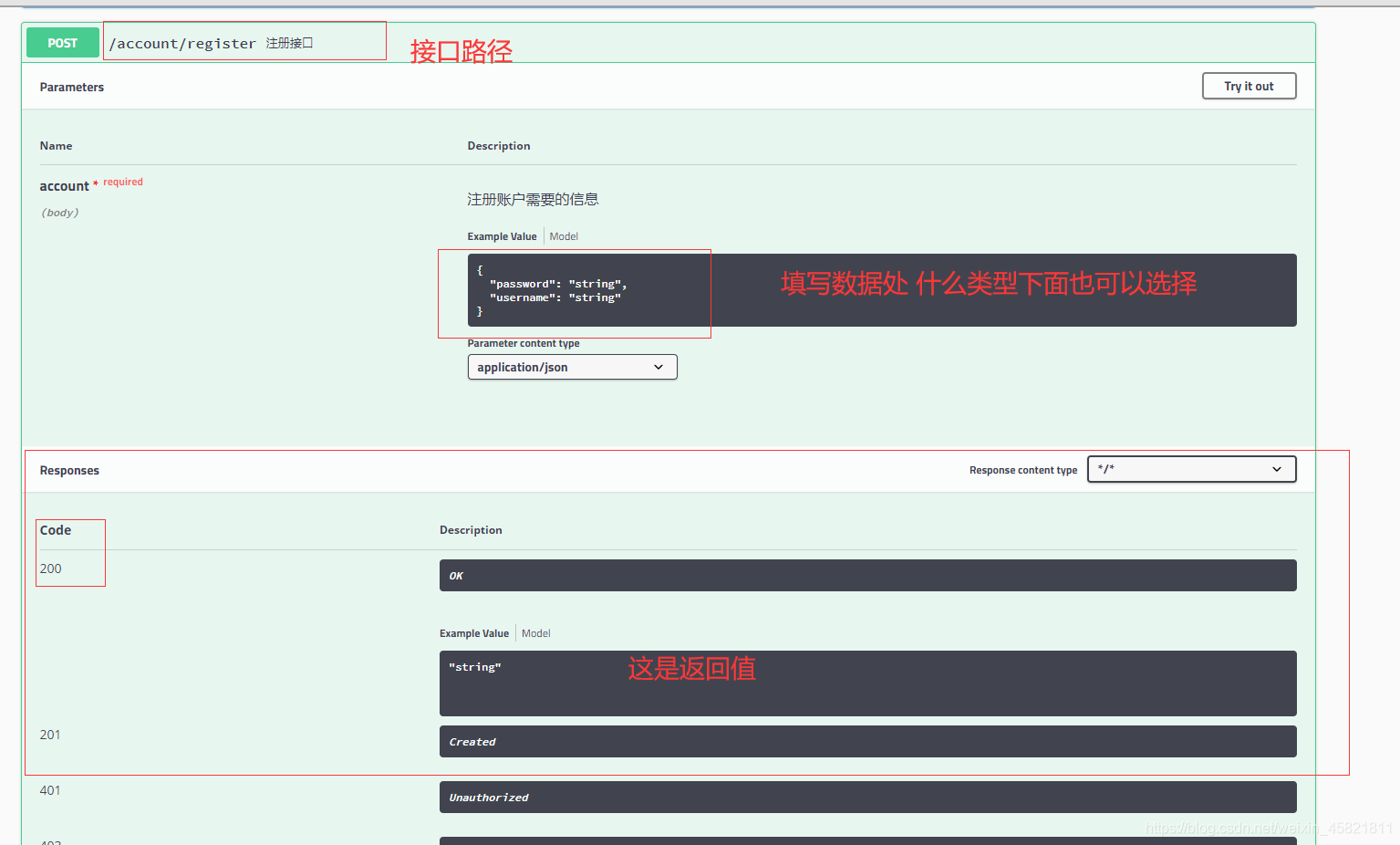
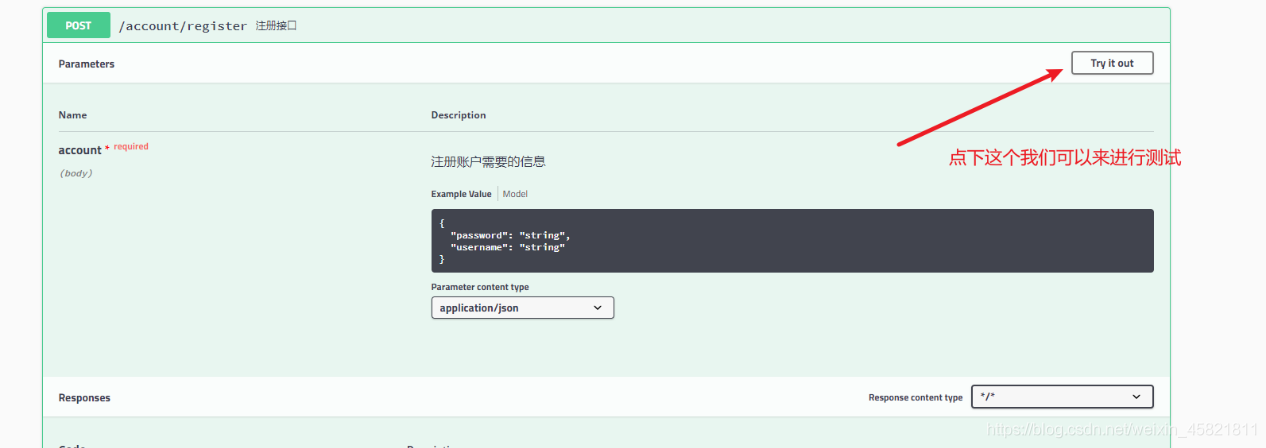
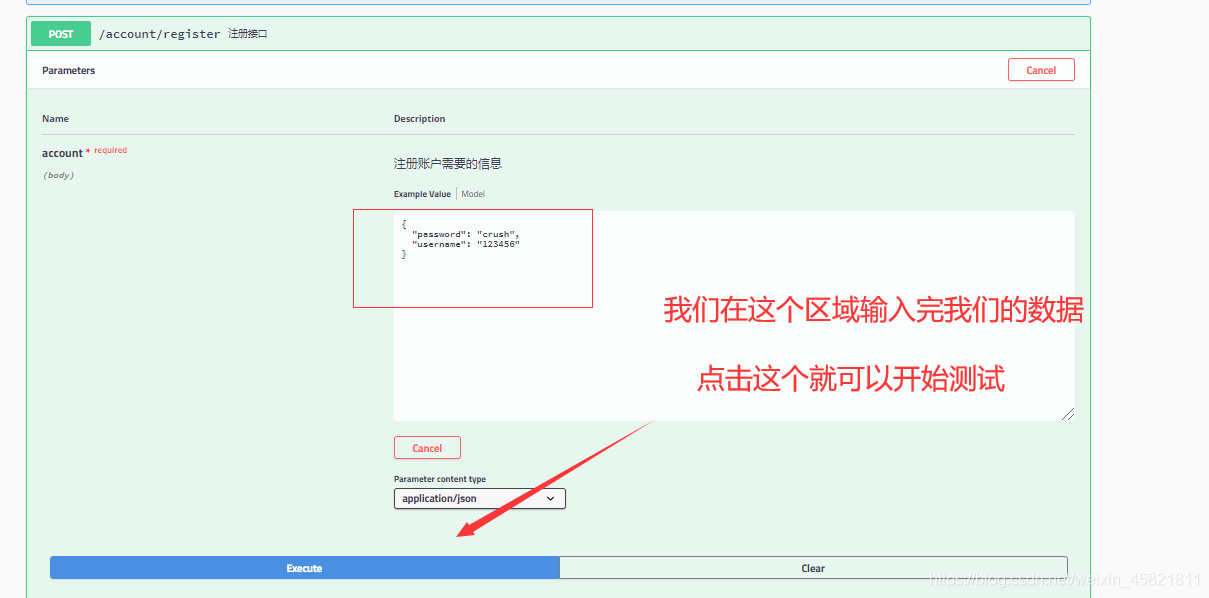
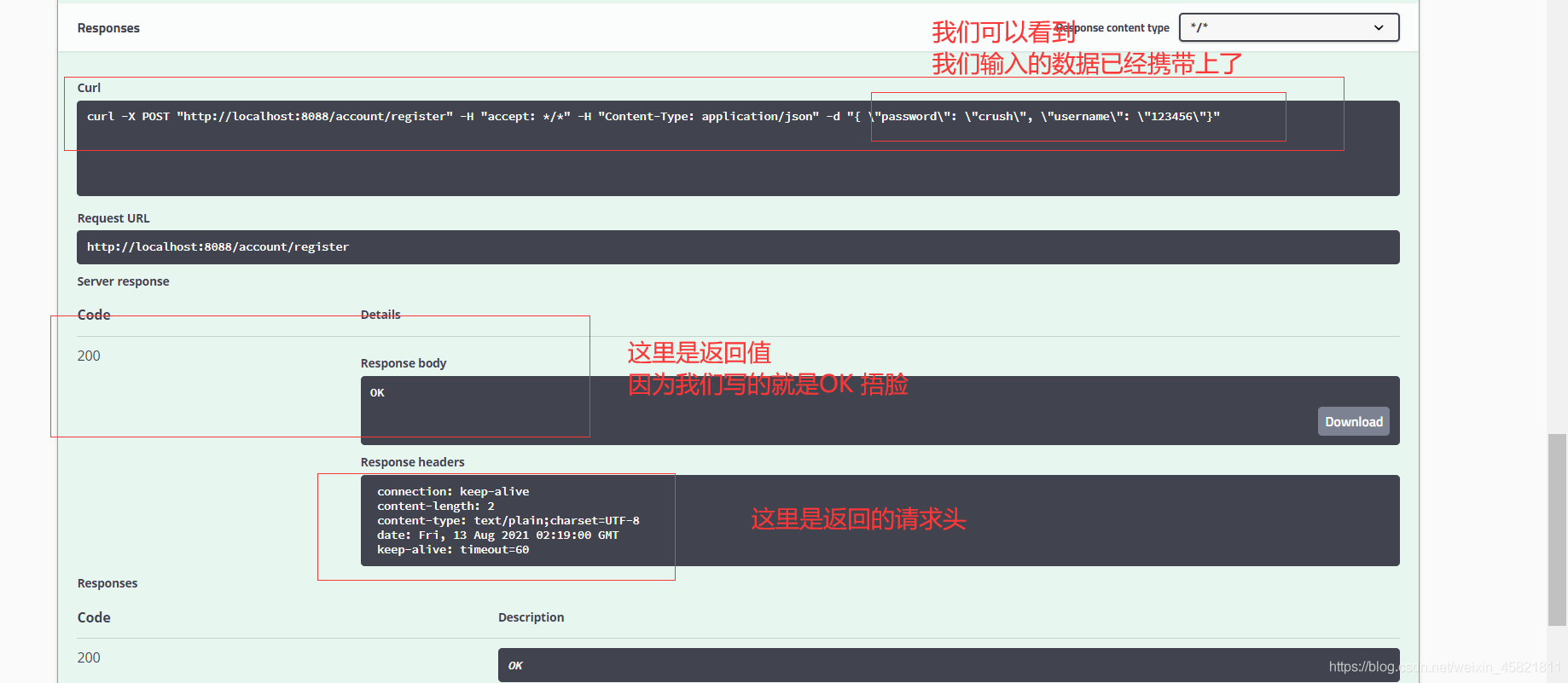
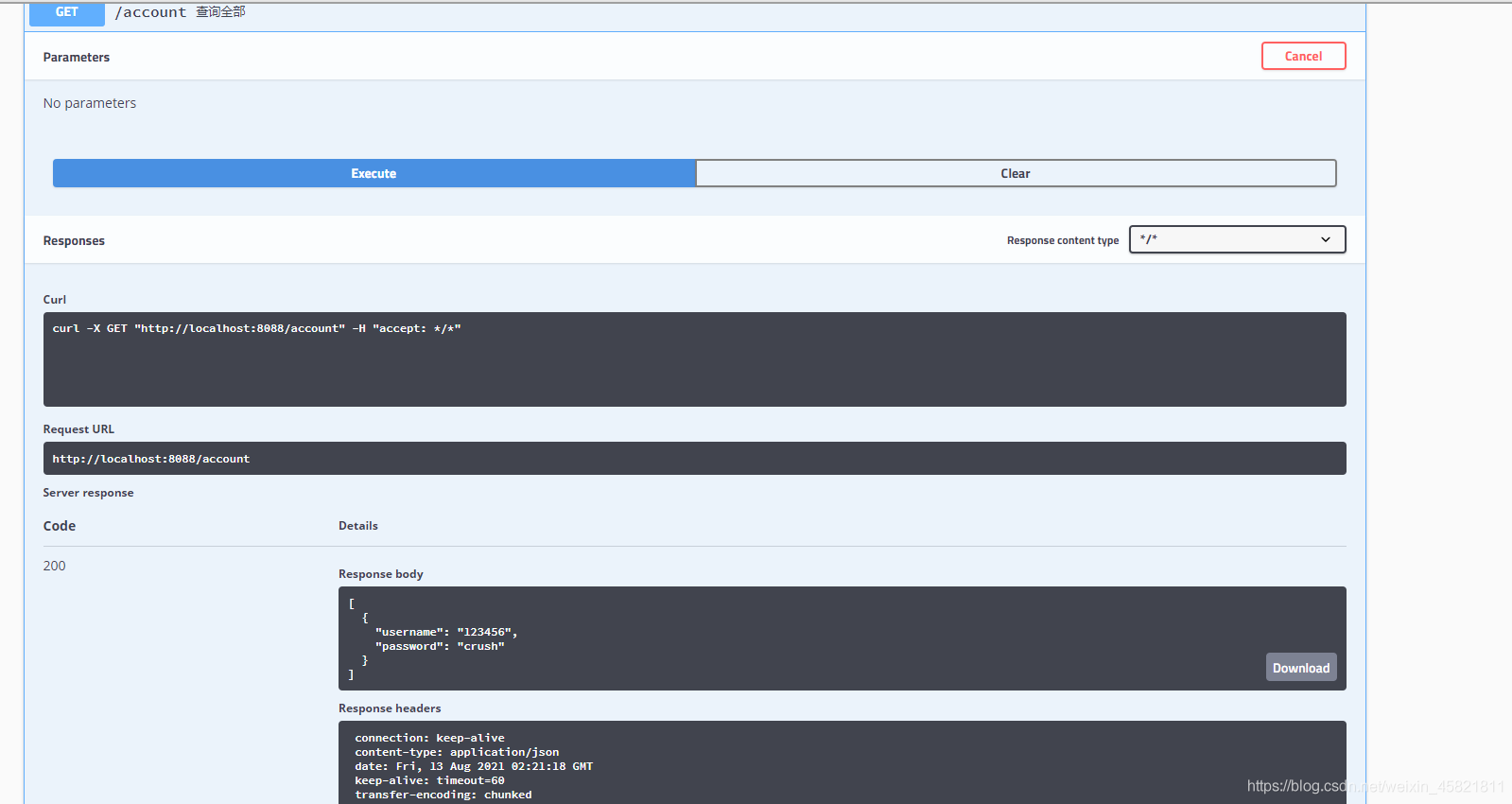











评论